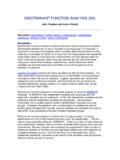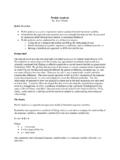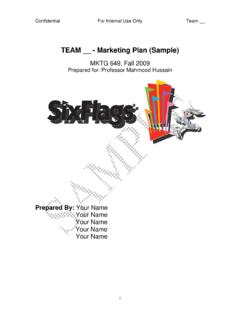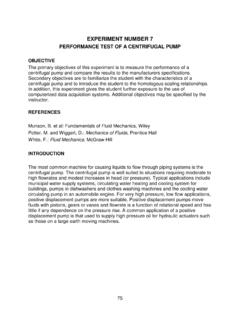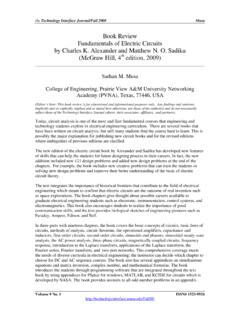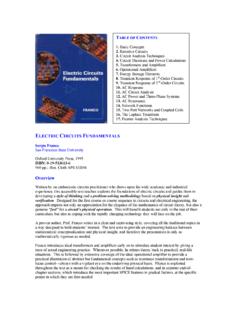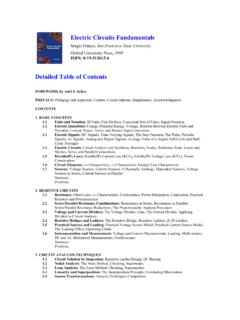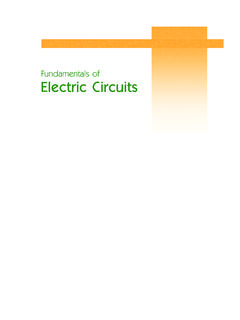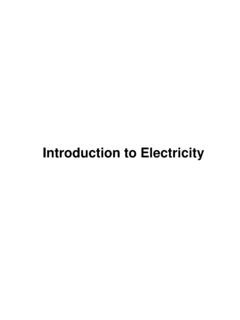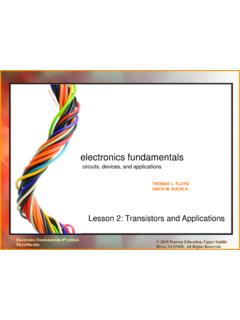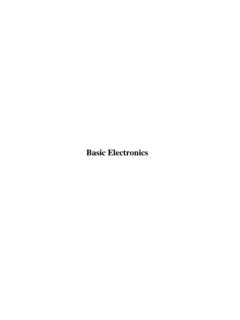Transcription of Electric Circuits Fundamentals - userwww.sfsu.edu
1 PREFACE This book is designed to serve as a text for a first course or course-sequence in Circuits in an electrical engineering curriculum. The prerequisites or corequisites are basic physics and calculus. Special topics such as differential equations and complex algebra are treated in the text as they arise. The book can be used in a two-semester or in a three-quarter course sequence, or in a single-semester course. The goal of the book is twofold: (a) to teach the foundations of Electric Circuits , and (b) to develop a thinking style and a problem-solving methodology based on physical insight.
2 This approach is designed to benefit students not only in the rest of the curriculum, but also in the rapidly changing changing technology that they will face after graduation. Since the study of Circuits is the foundation for most other courses in the electrical curriculum, it is critical that we guide the reader in developing an engineering approach from the very beginning. Armed, on the one hand, with the desire to finally apply the background of prerequisite math courses, and overwhelmed, on the other, by the novelty and wealth of the subject matter, students tend to focus on the mathematics governing a circuit without developing a sufficiently deep feel for its physical operation.
3 After all, circuit theory possesses a mathematical beauty of its own, and many a textbook emphasizes its abstract aspects without sufficient attention to its underlying physical principles, not to mention applications. Quite to the contrary, we believe that the role of a Circuits course is to provide an engineering balance between mathematical conceptualization and physical insight. Whether analyzing existing Circuits or designing new ones, engineers start from a physical basis and then resort to mathematical tools to gain a deeper and most systematic under-standing.
4 But, in the true spirit of engineering, results are ultimately checked against physical substance, not just mere mathematical abstraction. This is especially true in computer-aided analysis and design, where results must be interpreted in terms of known physical behavior. Students who are not given an early opportunity to develop physical intuition will subsequently have to do so on their own in order to function as engineers. This book was written to provide this early opportunity without necessarily watering down the mathematical rigor. As an enthusiastic practitioner of circuit theory, the author firmly believes that a Circuits course should be accompanied by a laboratory to provide experimental reinforcement of the theory as well as to introduce the student to instrumentation and measurements.
5 Whenever the opportunity arises, we attempt to relate concepts and principles to laboratory practice, but we do so without disrupting the flow of the material. Lacking a laboratory, the use of SPICE should be promoted as a software breadboard alternative for trying out the Circuits seen in class. Moreover, the Probe graphics post-processor available with PSpice provides an effective form of software oscilloscope for the visualization of waveforms and transfer curves. Ultimately, however, the student must be stimulated to interpret SPICE results in terms of known physical behavior.
6 PEDAGOGY AND APPROACH The material covered is fairly standard in terms of topic selection. To prevent excessive conceptualization from obfuscating the physical picture, the book tries to be as mathematically rigorous as needed. Moreover, to maintain student interest and motivation, it attempts, whenever possible, to relate the theory to real-life situations. In this respect, ideal transformers and amplifiers are introduced early enough to stimulate the reader with a foretaste of real-life engineering. The book also makes extensive use of the operational amplifier to provide sa practical illustration of abstract but fundamental concepts such as impedance transformation and root location control, always with a vigilant eye on the underlying physical Electric Circuits Fundamentals Sergio Franco, San Francisco State University Oxford University Press, 1995 ISBN: 0-19-513613-6 basis.
7 To this end analogies are often drawn to non-electrical systems such as mechanical and hydraulic systems. To comply with ABET's emphasis on integrating computer tools in the curriculum, the book pro-motes the use of SPICE as a means for checking the results of hand calculations. The features of SPICE are introduced gradually, as the need arises. SPICE coverage has been kept separate from the rest of the material, in end-of-chapter sections that can be omitted without loss of continuity. Each chapter begins with an introduction outlining its objectives and its relation to the rest of the subject matter, and it ends with a summary of its key points.
8 Whenever possible, chapters and sections have been designed to proceed from the elementary to the more complex. The text is interspersed with 351 worked examples, 414 exercises, and 1000 end-of-chapter problems. The goal of the examples is not only to demonstrate the direct application of the theory, but also to develop an engineering approach to problem solving based on conceptual understanding and physical intuition rather than on rote procedures. It is felt that if students are given the opportunity to identify a basic core of principles and a common thread of logic, they will in turn be able to apply these principles and logic to the solution of a wide range of new and more complex problems.
9 In the solution of the numerous examples, the book stresses the importance of labeling, inspection, physical dimensions, and checking; critical points are highlighted by means of remarks. Students are continually challenged to question whether their findings make physical sense, and to use alternative approaches to check the correctness of their results. The exercises are designed to provide immediate reinforcement of the student's grasp of principles and methods, and the end-of-chapter problems are designed to offer additional practice opportunities.
10 For the convenience of students and instructors alike, the problems have been keyed to individual sections. To give students a better appreciation for the human and historical sides of electrical engineering, each chapter contains an essay or interview. Subjects include biographies of famous inventors, interviews with well-established engineers and recent graduates, and topics of current interest. CONTENT Following is a coarse content description. Additional details and rationale considerations can be found in the introductions to the individual chapters.
